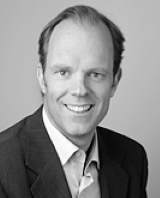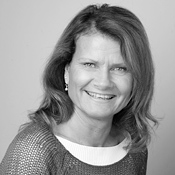
Coor moves into the future
We’ve written a lot about activity-based workspaces in Nova—a segment where Coor possesses leading competence. Coor turned theory into practice with Concept Office, its experimental flexible office environment. Coor is fully committing to the next step now, as it relocates to the high-tech business hub of Kista, north of Stockholm. In November, 250 staff will work in an activity-based format in tailored premises.
Coor started its search for new premises last spring. The first phase was to evaluate some 40 options, which were filtered down to 15 fairly quickly. Finally, Coor had 4-5 alternatives that satisfied a number of criteria.
“We all wanted to be on one floor in an open-plan layout. We needed at least 3,000 m² of space. Then we had criteria such as good communication links, good services in the house and in the surroundings, and obviously, location. But the most crucial factor was how adaptable premises were to our business. We work on services, and want to demonstrate what it means to be at the leading edge in workplace services,” commented Leif Eliasson, the main Project Manager of Coor’s relocation to is new head office.
Coor finally settled on premises in Kista Entré, currently under construction with landlord Vasakronan. By questioning traditional offices and evaluating based on people’s needs and workloads, Coor was able to cut the office space it requires by 1,000 m² from its current 4,200 m².
“Concept Office, which we’ve been running since 2009, was our starting-point. By interviewing the people that have trialed this environment, we gained valuable knowledge of the success factors, and the pitfalls. We also measured workload using a new system linked to heat sensors mounted under desktops. In our new premises, we’re taking this idea further through a mobile app enabling people to see where there are free workstations.
This occupancy measure offers us good understanding of how contemporary office space is utilized and the steps we can take to rationalize it. But to gain a holistic perspective of all the different types of space and needs, we conducted in-depth interviews with managers. In these interviews, managers described how they operate in groups, what types of meeting they have, needs for other storage and the types of workspace and technology the office needs to support their working methods.
“These in-depth interviews helped us calculate a flex factor of between 0.4 and 1, 1 being one workspace per employee and less being workspace per employee. 0,4 means highly flexible. Different groups have differing needs; some need access to physical items such as our telephony and customer service people, who need permanent workstations, so their flex factor is 1. You could compare this to our sales resources, who are often at customer meetings, and thus have a significantly lower flex factor.
Our guiding principles for creating the best feasible office are: functional, flexible, contemporary, credible and cost-efficient
Based on this research, an architect produced a layout furnishing in different zones: touchdown (space where you can dock in and download mail between meetings), team workspaces, desks, meeting furniture, telephone booths, meeting rooms, quiet rooms, social space and dedicated secure space.
“Our guiding principles for creating the best feasible office are: functional, flexible, contemporary, credible and cost-efficient. This means there is a thought behind everything we plan, build and furnish. Nothing is left to chance,” adds Leif.
The idea is that the office should give our people inspiration and a boost. When you go to Coor’s office, you should think it’s fun to work there. Not only because the premises are designed to make everyday work easier, but also because it’s designed for spontaneous encounters and to facilitate contact. Leif’s view is that everything proceeds from people.
“For example, we’ll have a lounge/café space that invites people to sit down and work alone or in groups. Reception won’t just operate traditionally, but will also be an open space with a large sideboard, enabling us to create a sense of life and a pulse. This sideboard will have fold-out tablets, so customers can order taxis themselves.”
One critical factor for a smoothly functioning office is intelligent and well-considered technology solutions—so everything works simply and smoothly. For example, the WiFi network has such high capacity that it serves as our core network and the hardwiring is a back-up. We’ll also be integrating different systems to embed functionality into our daily activities, for example we’ll be linking a booking system with the door locks of conference rooms so the meeting’s registered attendees can open the door. If no-one’s opened the door after a quarter of an hour, the booking is cancelled, and the room becomes bookable again on the digital screen outside.
“This project is compelling us to make technological advances earlier than we would otherwise have considered. For example, we have an express goal of migrating from paper to digital media, which means we can achieve digitalized documents for all units. This is easy for some units, while for others, it represents a challenge, albeit an achievable one,” adds Leif.
One project—nine sub-projects
We’ll be following this project in Nova right until Coor moves in. Each issue will drill down into some of the sub-projects, summarizing the highlights of each process.
The project consists of the following sub-projects:
- Design—layout of the premises and furnishings
- Change process—when you relocate from an old office to an activity-based one, this brings changes. Things become ‘ours’ instead of ‘mine.’
- Communication/information—external signage (branding), displays in three phases to help people understand the final outcome.
- Conversion—execution of the conversion process and managing the interface with the landlord.
- Security—physical shell protection, fire safety, access to conference rooms, and parts of the premises.
- IT—infrastructure, that we have solutions that support our new working methods, such as wireless networks, all workspaces having the same equipment and telephony (PBXs, conference call facilities and mobile telephony).
- AV—audiovisual equipment in conference rooms, reception displays, and located in the office environment.
- Service delivery—designing services in premises, how the service should work, mail delivery, etc.
- Relocation and premises termination
Want to know more about the state-of-the-art occupancy measures conducted using heat sensors?
Contact Erik Sörnäs
Want to find out more about how you prepare affected staff for a major change to workspace design (when implementing activity-based workspaces for example)?
Contact Carina Hörnfelt-Bylund


Erik Sörnäs
Head of the Workspace Management Centre of Excellence

